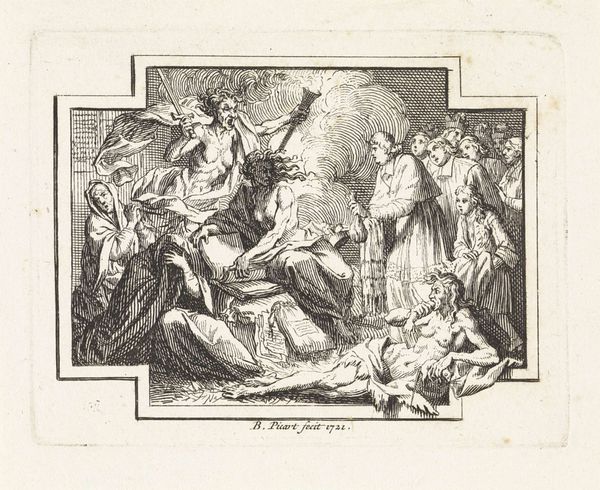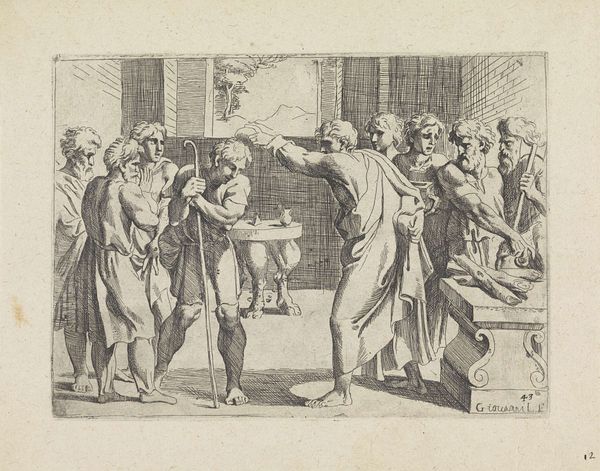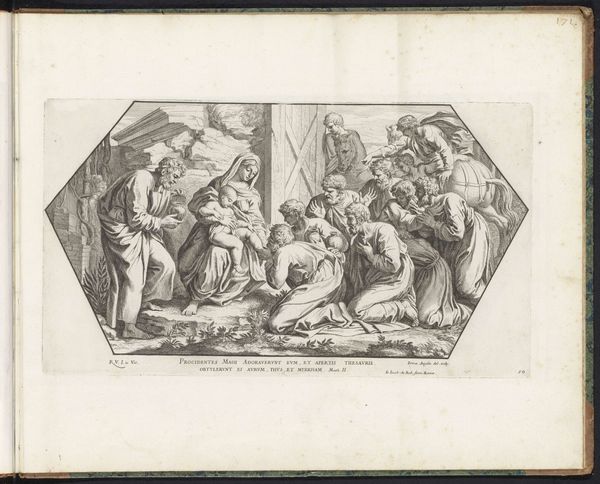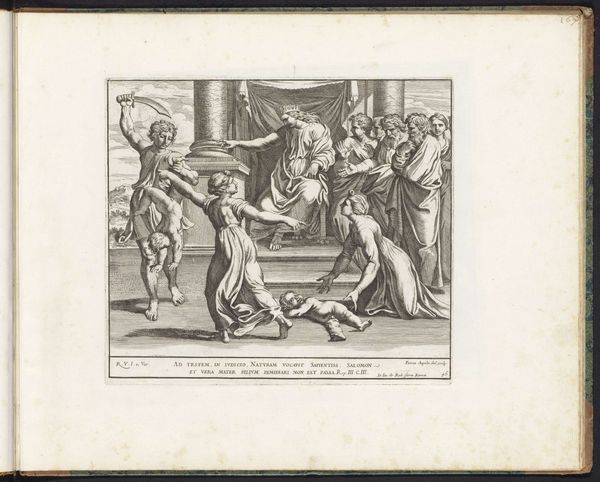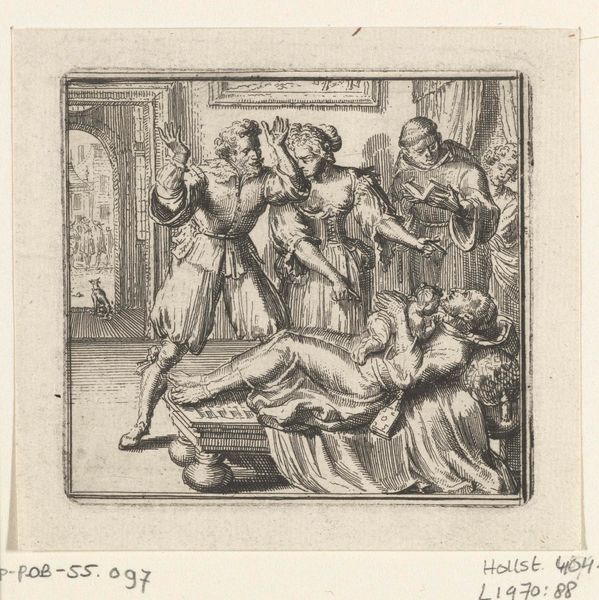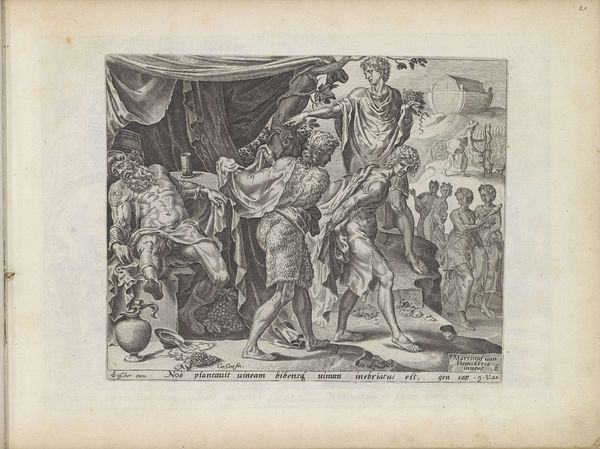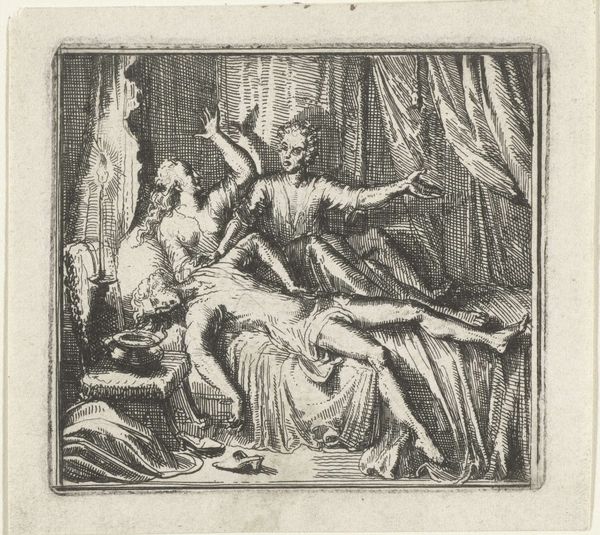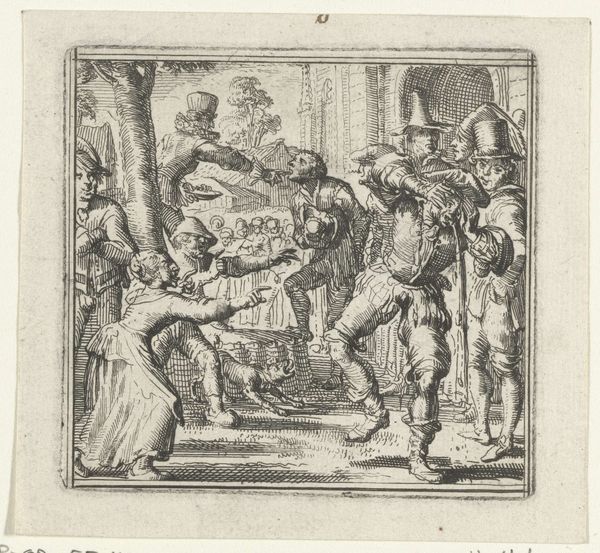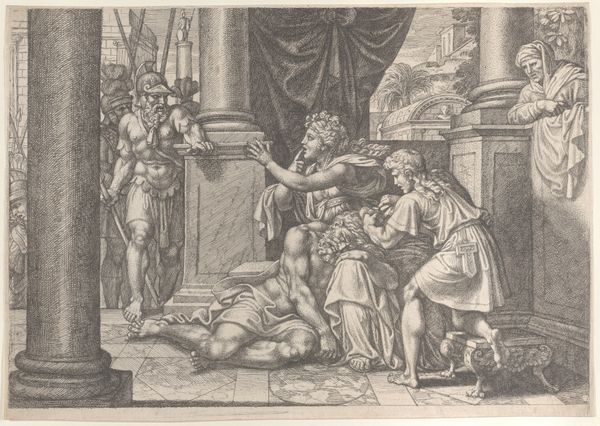
intaglio, engraving
#
aged paper
#
toned paper
#
light pencil work
#
narrative-art
#
baroque
#
intaglio
#
pencil sketch
#
sketch book
#
figuration
#
personal sketchbook
#
pen-ink sketch
#
sketchbook drawing
#
history-painting
#
storyboard and sketchbook work
#
sketchbook art
#
engraving
Dimensions: height 131 mm, width 179 mm
Copyright: Rijks Museum: Open Domain
Editor: This is "The Judgement of Solomon" by Giovanni Lanfranco, created around 1607. It's an engraving, and you can really see the texture of the paper. It strikes me as a study in contrasts – the frenzied action versus the calm judgment of Solomon himself. What jumps out at you? Curator: What I notice first is the process. Think about the labor involved in creating an engraving like this. The intense physical work of cutting those lines into the metal plate. The artist is not just representing the scene; he's actively *making* it through a demanding, almost brutal, process. Editor: Brutal is a good word. Does the materiality influence how we interpret the story itself? Curator: Absolutely. The medium emphasizes the performative nature of justice. The image isn’t just about the *idea* of Solomon's wisdom. It shows the wielding of power, the material consequences of a king's decree. Notice the sword - the focal point of potential violence - but also consider the printing press it came from, and how prints spread certain ideas and powers around Europe. Editor: It’s fascinating to think about the physical labor contributing to such a morally complex image. So, how does understanding the materiality challenge any traditional interpretations? Curator: We move away from simply admiring Lanfranco’s artistic skill. Instead, we acknowledge the entire chain of production. The work represents far more than one individual's creation; it encompasses the whole social and material context of printmaking in 17th-century Europe. This makes me see it with a whole new appreciation. Thanks. Editor: It certainly made me consider the economics of artistic labour too! Thanks for sharing this perspective.
Comments
No comments
Be the first to comment and join the conversation on the ultimate creative platform.

